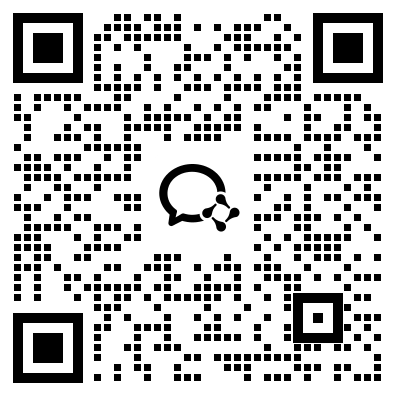学士学位英语考前必备干货:阅读理解答题技巧
学位英语阅读理解做题原则:试题的顺序和文章的行进顺序是一致的
第一步:划出关键词,确定试题提问的对象
第二步:到文章中寻找关键词出现的句子
第三步,对比四个选项,选出正确答案
学位英语阅读理解词汇题答题方法
? 通过上下文句子间的逻辑关系,推测词义。
? 词汇题测试我们通过上下文推测词义的能力。
?词汇和上下文会形成各种逻辑关系,如并列关系,转折关系,让步关系等等,通过这些关系来推测单词的含义。
提问方式》》》
According to the author, the word "…" means_______.
Which of the following is nearest in meaning to "…"?
The term "..." in paragraph…can be best replaced by______?
What's the meaning of "…" in line…of paragraph….?
词汇练习》》》
1. lf you have trouble falling asleep, some people recommend breathing very slowly and very deeply. Other people believe that drinking warm milk will help make you drowsy. There is also an old suggestion that counting sheep will put you to sleep!
Question:
The word drowsy in the last paragraph means ______.
A. sick C. asleep B. stand up D. a little sleepy
【答案】D。
Other people believe that drinking warm milk will help make you drowsy. 这句话和前面一句话是平行关系,两者表达的是同一种事物的不同解决方式,因此, drowsy的意思应当和前面一句话中的"fall asleep"具有相近的意思,从四个选项来看,应为D. a little sleepy “困倦”的意思,而不会是sick “病”,stand up“站起来”,asleep“睡着”的意思。
2. In the early grades especially, experts say, youngsters should be encouraged to work in groups rather than individually so that teachers can spot children who may be having problems making friends.
Question:
In the first paragraph, the word spot means ______.
A. teach B. help C. find D. treat
[答案]C.
本句含有一个so that引导的目的状语从句,spot的意思需要根据前后两句话的意思来作出推断。前一句话的意思是“教师鼓励孩子们参加集体活动,而不是参加个人活动”这是一个达到目的所实施的手段,后面是目的。从前面句子中的“集体活动”,以及后面的“交朋友有问题”可以推论出,spot的意思是“发现,找出”。
学位英语阅读理解细节题的做题方法
细节题的做题方法我们称之为还原定位法,即把试题准确地在原文中进行定位,找到答案所在的句子。这种方法的运用有三个步骤:
还原定位法>>>
① 先看试题,后读原文。
这样做既节省了时间,又提高了做题的效率和准确度。
② 对试题在原文中的位置进行模糊定位。
因为试题的出题顺序和文章的叙述顺序存在高度的一致性。
③ 对试题在原文中的位置进行准确定位。
对试题在原文中的位置进行准确定位的前提是抓住试题中的标志词和关键词。
标志词>>>
1.专有名词,是指表示人名、地名和组织机构等的名词,这样的名词在文章中一般都要大写;
2.表示时间或年代的词;
3.专业词汇,这样的词汇一般都是比较难懂,一般是我们不认识的词汇。
关键词>>>
指表达试题内容的中心词,一般是试题中的名词和名词词组。
练习题>>>
例1 A study was done with 30 three-year-old children and their parents. Half of the children participated in the experimental study; the other half acted as the control group. In the experimental group, the parents were given a two-hour training session in which they were taught to ask open-ended questions rather than yes-or-no questions. For example, the parent should ask, "What is the doggie doing?" rather than "Is the doggie running away?" The parents in the experimental group were also instructed in how to help children find answers, how to suggest alternative possibilities and how to praise correct answers.
Question: The difference between the control group and the experimental group was _____.
A. the training that parents received
B. the age of the children
C. tile books that were read
D. the number of the children
【答案】A。根据试题中的关键词control group and the experimental group,找到文章中与本题相关的句子。仔细阅读后可知,学生们被分为两组:实验组和对照组,实验组中父母要受到两个小时的培训。所以两组的区别就在于其父母接受的培训不同。因此选项A是正确答案。
例2 If you look at children, you'll see great difference between what we call "bright" children and "not-bright" children. They are actually two different kinds of people, not just the same kind with different amount of intelligence. For example, the bright child really wants to find out about life, ─ he tries to get in touch with everything around him. But, the unintelligent child keeps more to himself and his own dream-world; he seems to have a wall between him and life in general.
Question: Bright children and not-bright children _____.
A. are two different types of children
B. are different mainly in their degree of cleverness
C. have difference only in their way of thinking
D. have different knowledge about the world
【答案】A。根据试题中的关键词Bright children and not-bright children确定试题在文章的位置,以及与本题相关的句子。仔细阅读后可知,聪明孩子和不太聪明的孩子实际上是两类不同的人,而并不是聪明程度不同的同一类人。故A与原文表述一致,B与原文相反。正确答案中的type是原文中的单词kind的改写。
例3 When we talk about intelligence, we do not mean the ability to get good scores on certain kinds of tests or even the ability to do well in school. By intelligence we mean a way of living and behaving, especially in a new or upsetting situation. If we want to test intelligence, we need to find out how a person acts instead of how much he knows what to do.
Question: According to this passage, intelligence is _____.
A. the ability to study well
B. the ability to do well in school
C. the ability to deal with life
D. the ability to get high scores on some tests
【答案】C。根据试题中的关键词intelligence,找到文章中和本题对应的句子,是在本段的第一句话和第二句话。通过对这两句话的归纳总结,选项C为正确答案。
学位英语阅读理解主旨题做题方法
从第一段的第一句或者第一段,以及各个段落的第一句话,总结归纳出文章的中心思想。
The main idea of the passage is…
Which is the best title for the passage?
例1
The agriculture revolution in the nineteenth century involved two things: the invention of labor-saving machinery and the development of scientific agriculture. Labor-saving machinery naturally appeared first where labor was scarce. "In Europe", said Thomas Jefferson, "the object is to make the most of their land, labor being sufficient; here it is to make the most of our labor, land being abundant". It was in America, therefore, that the great advances in nineteenth-century agricultural machinery first came.
At the opening of the century, with the exception of a crude(粗糙的)plow, farmers could have carried practically all of the existing agricultural tools on their backs. By 1860, most of the machinery in use today had been designed in an early form. The most important of the early inventions was the iron plow. In 1869, James Oliver of South Bend, Indiana, turned out the first chilled-steel plow.
Question: The passage is mainly about _____.
⊙A. the agriculture revolution
⊙B. the invention of labor-saving machinery
⊙C. the development of scientific agriculture
⊙D. the farming machinery in America
例2
We use both words and gestures to express our feelings, but the problem is that these words and gestures can be understood in different ways.
It is true that a smile means the same thing in any language. So does laughter or crying. There are also a number of striking similarities in the way different animals show the same feelings. Dogs, tigers and humans, for example, often show their teeth when they are angry. This is probably because they are born with those behavior patterns.
Fear is another emotion that is shown in much the same way all over the world. In Chinese and in English literature, a phrase like "he went pale and began to tremble" suggests that the man is either very afraid or he has just got a very big shock. However, "he opened his eyes wide" is used to suggest anger in Chinese whereas in English it means surprise. In Chinese "surprise" can be described in a phrase like "they stretched out their tongues!" Sticking out your tongue in English is an insulting gesture or expresses strong dislike.
Even in the same culture, people differ in ability to understand and express feelings. Experiments in America have shown that women are usually better than men at recognizing fear, anger, love and happiness on people's faces. Other studies show that older people usually find it easier to recognize or understand body language than younger people do.
Question: The best title for this passage may be _____.
⊙A. Words and Feelings
⊙B. Words, Gestures and Feelings
⊙C. Gestures and Feelings
⊙D. Culture and Understanding
例1【答案】B。文章的行文结构如下:从文章的行文结构可以发现,文章着重论述的是在美洲农业机械的应用的历史,因此选项B是正确答案。
例2【答案】B。从文章的行文结构可以看出,文章运用了两段的篇幅在论述情感和语言以及肢体动作的关系,因此,选项B是正确答案。
本文由自考365整理,未经允许,禁止转载。
强烈推荐:扫一扫,关注赵文通老师的微信,更快获取学位英语/成人英语三级考试动态及备考资料,微信公众号:xueweiyingyukaoshi,欢迎添加!













